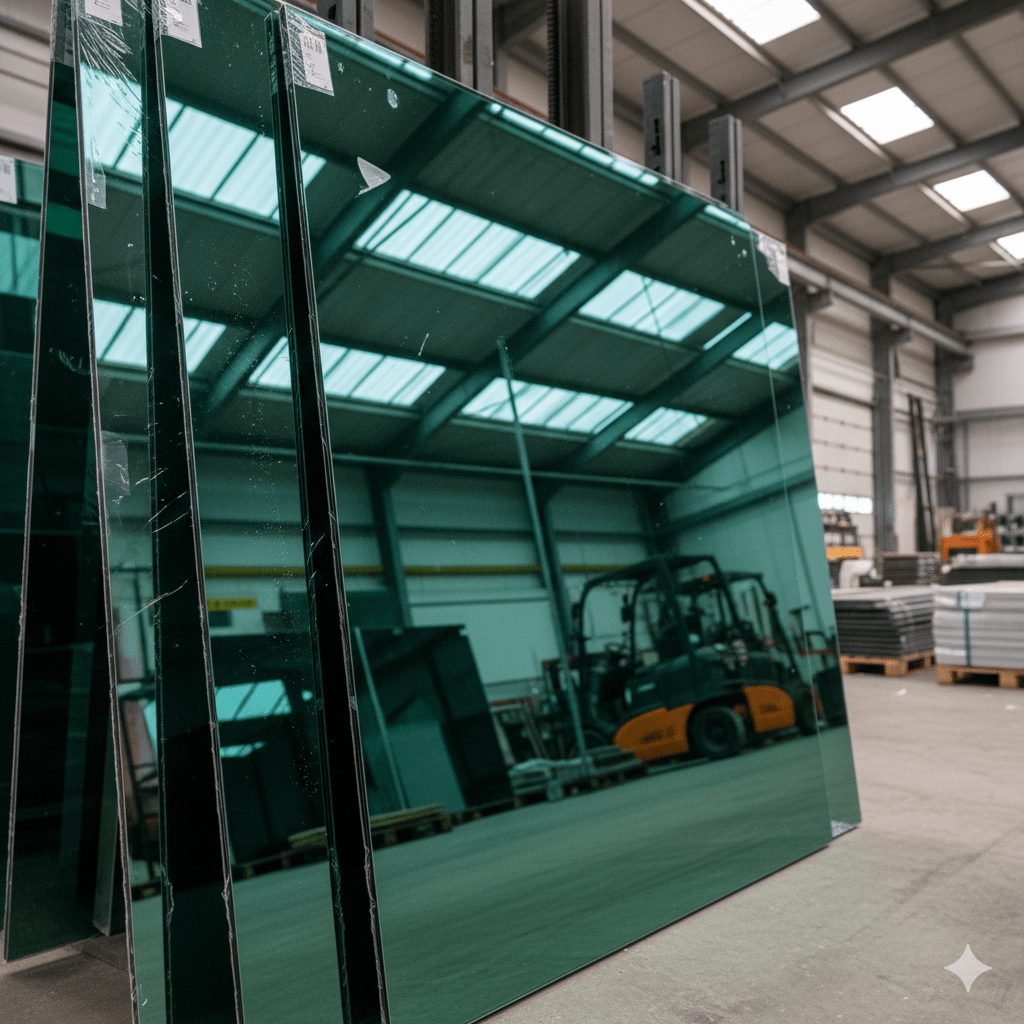Green Reflective Glass: A Modern Marvel for Sustainable and Stylish Architecture
Green Reflective Glass In the ever-evolving world of architecture and construction, the materials used play a crucial role not just in the functionality of a building, but also in its environmental impact, aesthetic appeal, and energy efficiency. One such material that has seen a surge in popularity in recent years is green reflective glass. Both beautiful and practical, this glass is transforming the skyline of modern cities and making buildings smarter, greener, and more efficient.
But what exactly is green reflective glass, and why is it becoming a preferred choice for architects, engineers, and designers across the globe? Let’s dive deep into the features, benefits, applications, and considerations of this remarkable material.
What Is Green Reflective Glass?
Green reflective glass is a type of solar control glass that features a metallic coating applied during the manufacturing process. This coating reflects a significant portion of solar radiation, particularly infrared and ultraviolet rays, while still allowing visible light to pass through. The result is a tinted, mirror-like surface that not only enhances privacy and aesthetics but also boosts energy efficiency.
The green tint gives the glass its distinctive appearance and is typically achieved by adding iron oxide during the float glass manufacturing process. The reflective coating, on the other hand, is created using a technique called pyrolytic deposition or magnetron sputtering, depending on the desired properties.
Key Features of Green Reflective Glass
- Solar Control: The primary function of green reflective glass is to reduce heat gain by reflecting a substantial portion of solar energy. This helps in maintaining cooler indoor temperatures, especially in regions with hot climates.
- Energy Efficiency: By limiting the amount of heat that enters a building, green reflective glass reduces the need for air conditioning, leading to lower energy consumption and utility bills.
- UV Protection: It blocks harmful ultraviolet (UV) rays, protecting interiors from fading and degradation over time.
- Aesthetic Appeal: The green tint and reflective surface provide a sleek, modern appearance that enhances the overall look of buildings, making it a favorite in contemporary architecture.
- Daylight Optimization: While reflecting solar radiation, it still allows ample natural light inside, reducing the need for artificial lighting during the day.
- Privacy: Its reflective nature acts as a one-way mirror during daylight hours, offering privacy without compromising visibility from the inside.
Advantages of Using Green Reflective Glass
1. Thermal Comfort
One of the standout benefits of green reflective glass is its ability to maintain a stable indoor environment. By minimizing the transmission of solar heat, it helps in keeping interiors cooler in summer, which is particularly beneficial in tropical and subtropical regions.
2. Sustainability
Green reflective glass supports green building practices and helps projects earn certifications such as LEED (Leadership in Energy and Environmental Design). Lower energy consumption means a smaller carbon footprint, making it an environmentally responsible choice.
3. Design Versatility
Whether used in commercial facades, residential buildings, or interior partitions, green reflective glass blends seamlessly with various design styles. Its versatility extends to curved panels, frameless windows, curtain walls, skylights, and more.
4. Durability
Most green reflective glasses are manufactured with toughened or laminated safety glass, offering high resistance to impacts, weather conditions, and even fire in some cases.
5. Reduced Glare
By reflecting a portion of visible light, the glass minimizes glare, improving visual comfort for building occupants and reducing strain on the eyes.
Applications of Green Reflective Glass
Green reflective glass is a popular material in a wide range of construction and design projects, including:
– Commercial Buildings
It is widely used in the façades of office towers, shopping malls, and hotels due to its aesthetic appeal and performance benefits.
– Residential Buildings
In homes, it can be used for windows, balconies, and partitions to enhance energy efficiency while providing a stylish touch.
– Institutional Architecture
Hospitals, schools, and universities are increasingly using reflective glass for better temperature control and natural lighting.
– Interior Design
In interior spaces, green reflective glass can serve as decorative panels, partitions, and even furniture surfaces, adding a modern flair.
– Automotive Industry
Though less common, some luxury vehicles incorporate reflective glass for enhanced solar control and privacy.
Types and Variants
Green reflective glass can be classified based on its coating process:
- Hard-Coated (Online Coating): Applied during the float glass process, this type offers durability and is ideal for single glazing.
- Soft-Coated (Offline Coating): Applied in vacuum chambers post-production, it provides better performance but needs to be used in insulated glass units (IGUs) for protection.
It is also available in different thicknesses and performance grades, allowing architects to choose the best option based on climatic conditions and building orientation.
Installation and Maintenance
Proper installation is crucial to maximize the performance of green reflective glass. It is typically used in double-glazing units, often paired with clear or low-E (low-emissivity) glass for enhanced insulation.
Maintenance is relatively simple:
- Clean using a soft cloth and mild, non-abrasive cleaners.
- Avoid harsh chemicals that could damage the reflective coating.
- Inspect seals and joints periodically to prevent leakage or fogging in double-glazed units.
Things to Consider Before Choosing Green Reflective Glass
- Climatic Suitability: It’s best suited for hot and sunny climates. In colder regions, it may not provide sufficient insulation unless paired with additional thermal materials.
- Orientation of the Building: South and west-facing façades benefit most from reflective glass due to higher sun exposure.
- Privacy vs. Visibility: Reflective glass provides privacy during the day, but at night, with interior lighting on, it may become transparent from the outside.
- Cost: It is generally more expensive than standard glass, but the long-term energy savings often offset the initial investment.
Conclusion
Green reflective glass represents the perfect fusion of form and function. As cities aim to become more energy-efficient and sustainable, this smart glass solution offers a way to reduce environmental impact without compromising on design or comfort. Whether you’re a homeowner looking for better insulation, an architect designing a futuristic skyscraper, or a developer striving for green certification, green reflective glass is an investment in a brighter, cooler, and more sustainable future.
Tags: Commercial Glass Solutions, Decorative Glass, Energy Efficient Glass, Glass for Facades, Green Glass Panels, Green Reflective Glass, Modern Glass Designs, Reflective Glass Sheets, Residential Glass Solutions, Tinted Green Glass

